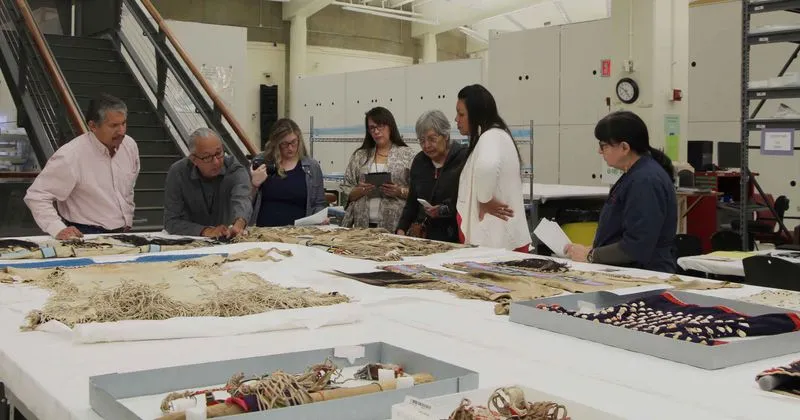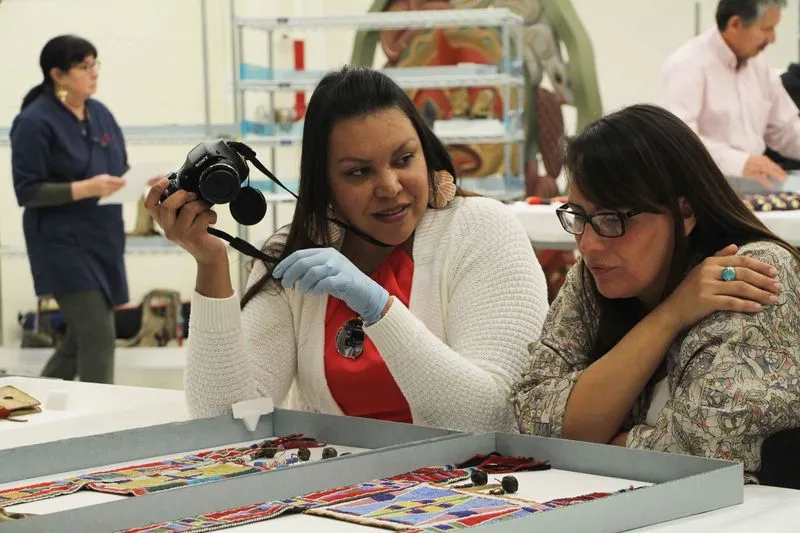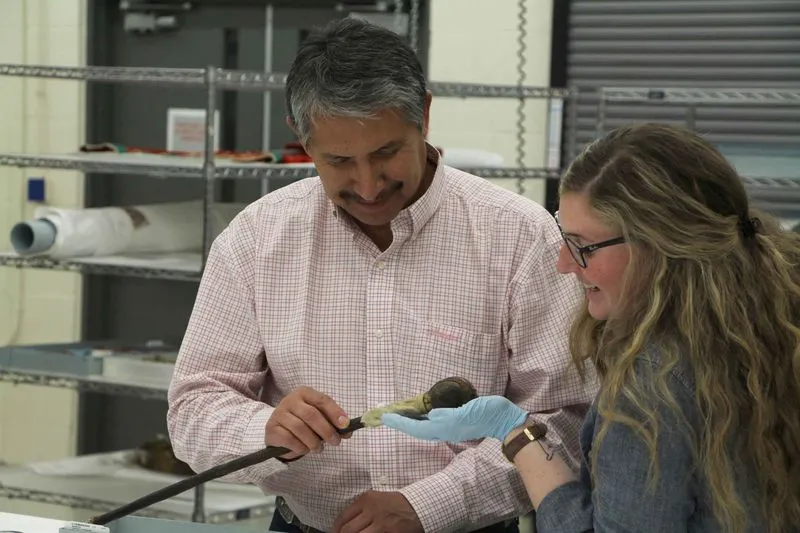
Search

News from Recovering Voices
Apsáalooke Revitalizing the Past; Formatting for the 21st Century
By: Zach Nelson with Judith Andrews
04/11/2016

One common way to share knowledge today is through Internet access, but what about when your target audience has more access to mobile devices and smart phones? You embark on creating a digital pocket archive in the form of a smart phone app that allows members of your tribe access to their cultural heritage held by museums. This kind of app is the goal of the Apsáalooke Community Research Group that visited the Smithsonian’s collections and archives in March 2016. Often referred to as the Crow Tribe, instead of their traditional name, the Apsáalooke, this group will share their research findings at the 98th Annual Crow Fair Celebration to be held this August and will continue work on the app. Each member of the research team joined for their specialized knowledge, skills, memories, and unique view of their ancestral past, giving the group an exciting diversity and dynamic. Two days spent in the expansive National Anthropological Archives and two days in the collections of the National Museum of the American Indian was not long enough to view all Apsáalooke material; however, the group was able to study many pieces, particularly historic Crow beading that included men’s shirts, bags, cradle boards, dolls and much more.

The research group is motivated to revitalize traditional ways and language of their cultural heritage, making the information more widely accessible along the way through the production of their digital pocket archive. The “old-style” of beadwork was of particular interest to several in the group, noting that modern techniques and embellishments often times overshadow the nuanced and subtle styles of the past. Some beadwork artists in the group were interested in comparing historic and modern beading and how intertribal trading, increased contact with Europeans, and the passage of time influenced the patterns and styles. They hope to bring older patterns and practices of beading home and that the knowledge shared at the upcoming Crow Fair will educate others about heritage that has not been used in many years. Others in the group were interested in viewing weapons, clothing and horse-trappings. One specific interest was in several horn-reinforced bows held by the Smithsonian in collections as there are some tribe members interested in recreating these unique bows. Measurements were recorded, photographs were taken and century old techniques and materials were discussed in order to discern how these bows were constructed and how current tribal members might work at recreation.

During their time in the National Anthropological Archives, the group watched the oldest film held by the Human Studies Film Archive, black and white footage from the Wanamaker Expedition to Crow Agency in 1908. The film captured scenes from an early Crow Fair and several battle re-enactments that took place during the celebration. In the 1990s the film was edited and then annotated with an audio track by Dean Bear Claw, a member of the Apsáalooke Tribe who was at the Smithsonian conducting research during that time. The group enjoyed hearing Dean’s description of the events taking place on film and were able to expound upon some of Dean’s commentary by giving additional stories and oral histories to the archives. Many of the other materials studied included ledger art, historical photographs, and field notes which brought unique stories to the discussions, such as the discovery of a photograph of a great-grandfather and an ancestor’s ledger drawings of animals seen at a circus from a visit to Washington, DC in 1880. The ledger drawings inspired one group member to imagine using them for a children’s book in the Crow language.

One topic of discussion during the week was how drastically the rate of fluent Crow speakers has declined in the past several decades. Today, schoolteachers estimate that about ten percent of their students are strong Apsáalooke speakers, as compared to fifty years ago when a majority of students were fluent. Linda, who teaches 3rd grade math and reading, and culture to grades K-5 fat the Fort Smith Elementary School, at Yellowtail, plans to use some of the knowledge she gained from the collections and archives in her own curriculum. She sees that many children can understand Crow, but cannot speak it and hopes to begin to remedy this by giving children more opportunities to speak the language at school. The entire group agreed on the need to improve their own speaking skills and discussed how to improve current language programs in the community in order to increase the use of their mother tongue.
The knowledge taken home from this research trip will be used by the tribe to inform their Crow Fair presentations and language education, and help spread the knowledge of the Apsáalooke’s material culture held in museums. Projects like the pocket archive will help make language , historic photographs, and material culture more accessible in this digital age that was not feasible in the past. When the delegation returned to Montana at the end of the week, it became clear that this was a promising beginning for their research project and we are excited to see their plans become a reality.
